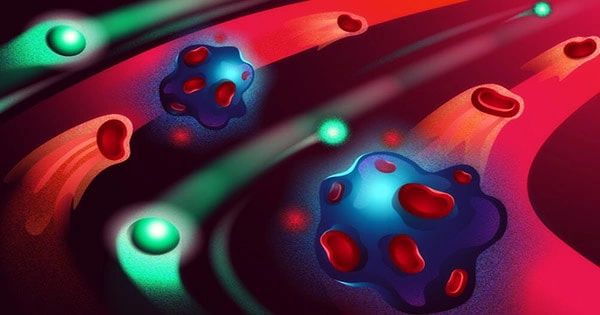Liquid metals (LM) are a novel family of materials with distinct physicochemical features, such as pure gallium (Ga) and Ga-based alloys. Photothermal therapy for cancer is one of the most well-known applications of LMs, in which functional LM nanoparticles convert light energy to heat energy, destroying malignant cells. Because of its excellent specificity, reproducibility, and low side effects, LM-based phototherapy outperforms standard cancer therapy.
Associate Professor Eijiro Miyako and his colleagues from Japan Advanced Institute of Science and Technology (JAIST) created multifunctional Ga-based nanoparticles that combine cancer phototherapy with immunotherapy in a new groundbreaking study.
The unique LM nanoparticle (PEG-IMIQ-LM) is made up of a eutectic gallium-indium (EGaIn) LM alloy and the immunological modulator imiquimod (IMIQ), both of which are contained in a biocompatible surfactant DSPE-PEG2000-NH2. Their findings were published in Advanced Functional Materials.
“We believe that the combination of nano-immuno engineering and LM technology could provide a promising modality for eliciting optimal immune responses for the advancement of cancer immunotherapy.” “In this study, we report light-activatable multifunctional LM nanoparticles with immunostimulants to combine photothermal therapy with immunotherapy,” Dr. Miyako explains of the team’s purpose for conducting this research.
To present IMIQ, the researchers first synthesized water-dispersible LM nanoparticles using a simple one-step sonication procedure with DSPE-PEG2000-NH2. This is a significant accomplishment because EGaIn LM is intrinsically water-immiscible.
Additional research demonstrated that LM disintegrates to assure IMIQ distribution to the target. Furthermore, the produced nanoparticle demonstrated a linear rise in absorbance in the near-infrared (NIR) region at 808 nm, indicating that it is optically activatable.
When the LM nanoparticle aqueous solution was irradiated with the NIR laser (808 nm), the team saw a significant increase in the temperature of the solution, which was proportionate to the increase in nanoparticle concentration. These results demonstrated that the PEG-IMIQ-LM nanoparticle was a strong and stable photothermal drug carrier that could be used in immunotherapy.
Further testing demonstrated that LM nanoparticles were exceedingly safe, causing no cytotoxicity in human fibroblast (MRC5) or mouse colon cancer (Colon26) cells.
A fluorescent dye known as indocyanine green (ICG) was injected into the particle by sonication to determine the degree of internalization and diffusion, resulting in the PEG-ICG-IMIQ-LM particle. Fluorescent (FL) microscopy with a laser beam revealed that the LM particle fluoresced strongly at several NIR wavelengths and instantly destroyed the Colon26 cells. Thus, LM particles could not only successfully carry the immunomodulant, but also track and destroy specific cancer cells in real-time.
Finally, the researchers created a versatile LM immune nano stimulator for cancer theranostics. To accomplish so, they combined the fluorescent LM nanoparticle with an anti-programmed death ligand-1 antibody (Anti-PD-L1), one of the most promising immune checkpoint inhibitors. The modified particle, Anti-PD-L1PEG-ICG-IMIQ-LM, diffused well and fluoresced significantly. The tumor surface temperature increased linearly with increasing time post-irradiation, indicating that the nanoparticle had an anticancer effect.
With the addition of Anti-PD-L1 to the nanoparticle, the LM particle was able to attach to PD-L1 on cancer cells, designating them for phagocytosis by macrophages and dendritic cells (DC). Laser-induced Anti-PD-L1-PEG-IMIQ-LM particles demonstrated the greatest and most complete cancer elimination, as well as the quickest healing and recovery.
Furthermore, when the tumor returned, mice treated with laser-induced Anti-PD-L1-PEG-IMIQ-LM particles demonstrated long-term anticancer efficacy and survival.
Dr. Miyako said of the study’s potential implications, “We believe that these synergistic immunological effects and optical nano functions of LMs have broad therapeutic applications and may contribute to innovative cancer theranostic technologies.” We anticipate that this technology will be ready for clinical testing within the next ten years.”
















